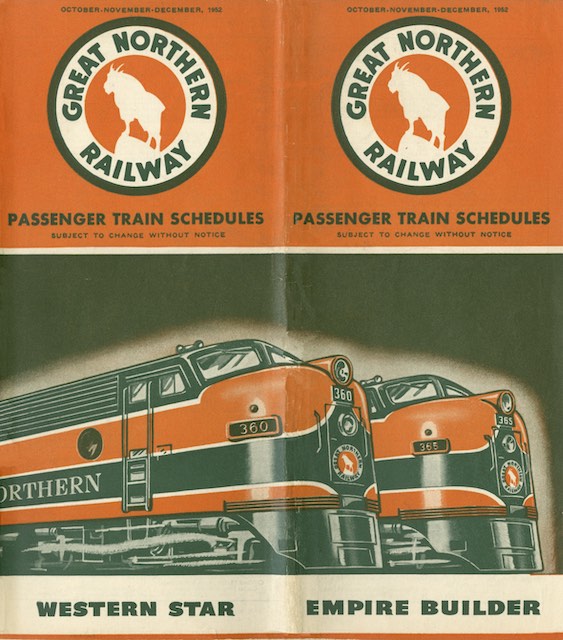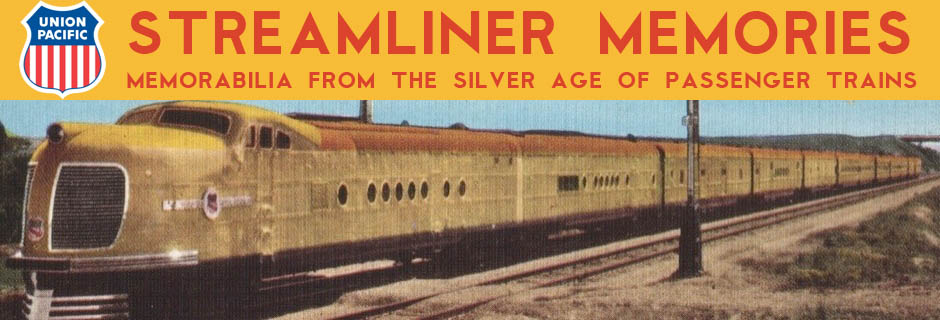Great Northern gave up on using E7 locomotives for its transcontinental trains in 1950, replacing them with F3s and F7s while consigning the E7s to non-mountainous trains such as the International and Red River. In early 1950, GN timetable covers still showed an E7 next to an F3, but by the time the streamlined Western Star replaced the Oriental Limited, the covers showed two F3s as shown here.
 Click image to download a 26.0-MB PDF of this 44-page timetable.
Click image to download a 26.0-MB PDF of this 44-page timetable.
Great Northern was not the only railroad to be disappointed in E units for mountain service. The Santa Fe, which had purchased E units before the war for the Super Chief and El Capitan, only purchased F units after the war. Southern Pacific, which operated many trains on relatively flat ground as well as in the mountains, bought a handful of E7s and E9s, but also had hundreds of F units.
Other railroads avoided E locomotives entirely. Perhaps learning from GN’s experience, Northern Pacific used only F units for its Diesel-powered passenger trains. GN’s half subsidiary, the Spokane, Portland & Seattle, bought one E7 for its portion of the 1947 Empire Builder but never bought a second one even though it didn’t have any real mountain terrain and needed more than one set of locomotives to power east- and westbound overnight passenger trains between Spokane and Portland.
Not having any mountains to contend with, the Burlington loved E locomotives. However, California Zephyr partner Western Pacific used F3s and the Denver & Rio Grande Western tried Alco PAs, a competitor to the E7, but eventually switched to F units for many of its passenger trains. The Milwaukee Road bought a few E units for prairie service but, of course, had electric locomotives for its mountain divisions.
The only western railroad to rely almost exclusively on E units for passenger service was Union Pacific. Having owned (or jointly owned with C&NW and SP) a half-dozen pre-war Es, after the war it bought 118 E7s, E8s, and E9s and converted four pre-war Es to E8s. The sheer number allowed UP to run three and four locomotives in a train, and unlike Great Northern, UP owned both A and B units so could run more than two locomotives together without interrupting the lines of the trains.
